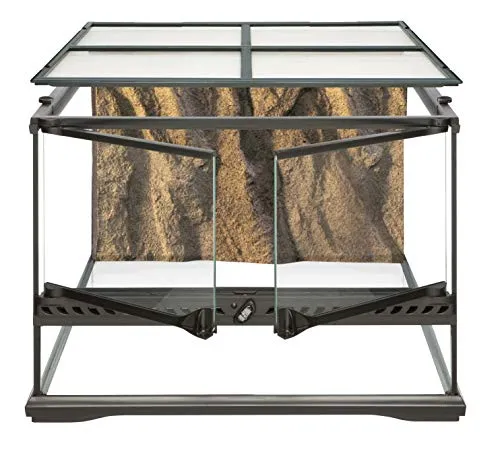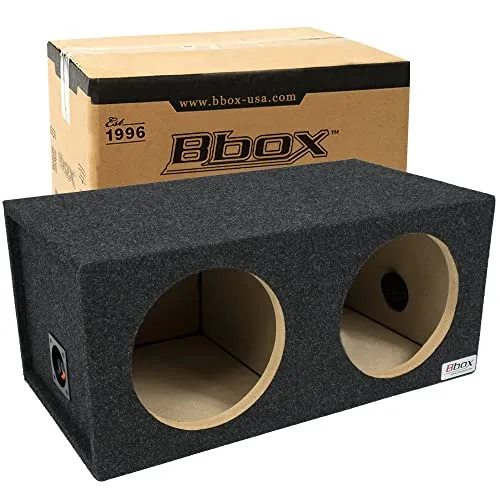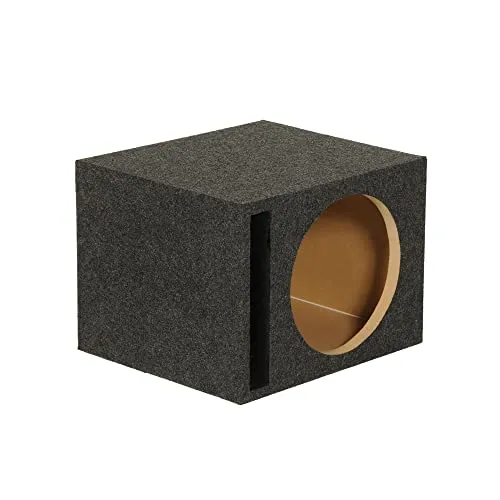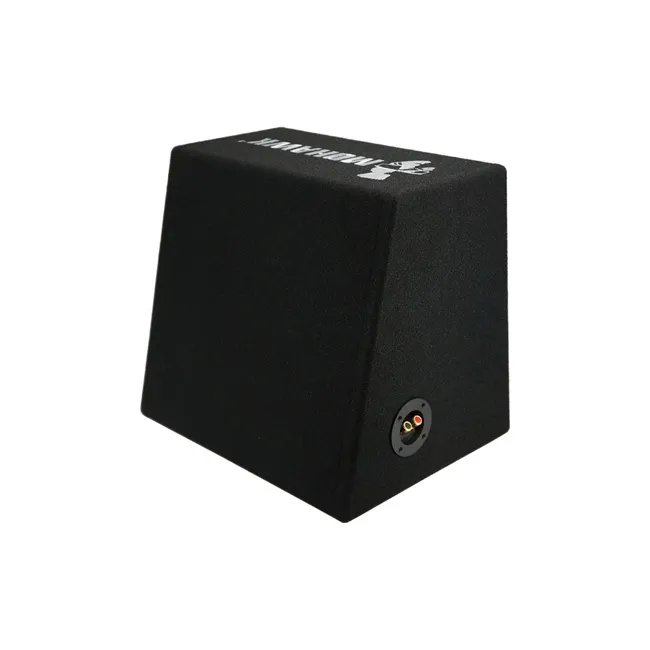Why Choose the Best Tarantula Enclosure?
Choosing the best tarantula enclosure is crucial for the health, well-being, and longevity of your eight-legged companion. A well-designed enclosure provides a safe, comfortable, and stimulating environment, mimicking the tarantula’s natural habitat as closely as possible. This ultimately reduces stress, promotes healthy eating habits, and encourages natural behaviors. A poor enclosure, on the other hand, can lead to a host of problems, including dehydration, injuries from falls, difficulty molting, and even premature death. Therefore, investing time and effort in selecting and setting up the ideal enclosure is an act of responsible pet ownership, ensuring your tarantula thrives for years to come. Understanding the specific needs of your tarantula species, such as its size, temperament, and preferred environmental conditions, is the first step towards creating the perfect home. Remember that creating a secure and stimulating environment will make it easier to observe and enjoy your tarantula.
What Is a Tarantula Enclosure?
A tarantula enclosure is essentially a specialized habitat designed to house a tarantula safely and comfortably. It serves multiple purposes, acting as a barrier to contain the tarantula, providing a suitable environment for its physical and psychological needs. The enclosure should be secure, escape-proof, and allow for proper ventilation to maintain air quality. The ideal enclosure should also allow for the maintenance of specific temperature and humidity levels, crucial for the tarantula’s well-being. Moreover, it should offer ample space for the tarantula to move around, burrow, and engage in natural behaviors, such as hiding and hunting. A well-designed enclosure not only caters to the tarantula’s physiological needs but also allows the keeper to observe the tarantula in its natural environment, enriching the overall experience for both pet and owner. There are many materials and shapes to choose from, all with pros and cons.
Choosing the Right Enclosure Size

Selecting the appropriate enclosure size is one of the most critical aspects of tarantula care. A too-small enclosure can restrict movement, limit space for burrowing or climbing, and cause stress, ultimately affecting the tarantula’s health and behavior. Conversely, a too-large enclosure, especially for smaller or younger tarantulas, can make it difficult for the tarantula to find its food, leading to potential feeding issues. As a general rule, the enclosure should be at least twice the tarantula’s leg span in width, with the height dependent on whether the species is terrestrial, arboreal, or fossorial. Always consider the adult size of the tarantula species when choosing the enclosure size, as they will continue to grow throughout their lifespan. This consideration helps prevent the need to upgrade the enclosure frequently. When in doubt, it’s better to err on the side of a slightly larger enclosure, ensuring ample space for the tarantula to thrive. Consider the ease of access when it comes to feeding and cleaning.
Factors in Enclosure Size
Several factors should be considered when determining the appropriate enclosure size. The most important factor is the tarantula species itself. Terrestrial species, which spend most of their time on the ground, require a larger surface area for roaming, while arboreal species, which live in trees, benefit from a taller enclosure to accommodate climbing. Fossorial species, which burrow, need a deep substrate layer. The tarantula’s growth stage also plays a significant role. Spiderlings and juveniles will need to be moved into larger enclosures as they grow. The temperament of the tarantula should also be taken into account. Some tarantulas are more active and require more space to explore. Providing enough space for the tarantula to move around and engage in its natural behaviors is essential for its well-being.
Ventilation for the Tarantula Enclosure
Adequate ventilation is a fundamental aspect of a healthy tarantula enclosure, as it prevents the buildup of stale air, reduces the risk of mold and mildew growth, and ensures proper oxygen levels. Proper ventilation helps regulate humidity levels, which is crucial for the tarantula’s health. Insufficient ventilation can create a humid environment that facilitates the growth of harmful bacteria and fungi, leading to respiratory problems and other health issues for the tarantula. The design of the enclosure should incorporate strategically placed vents, often in the form of mesh or small holes, to allow for air circulation. The number and size of vents should be tailored to the enclosure size and the specific requirements of the tarantula species. A well-ventilated enclosure helps maintain a clean and fresh environment, contributing to the tarantula’s overall health and well-being. Good ventilation is critical for preventing potentially fatal bacterial and fungal infections.
Ventilation Requirements

Ventilation requirements vary depending on the tarantula species and the enclosure’s overall design. Arboreal species, which often require higher humidity levels, might benefit from cross-ventilation, with vents placed on opposite sides of the enclosure. Terrestrial species generally do well with ventilation at the top and sides of the enclosure. Ensure the ventilation openings are small enough to prevent the tarantula from escaping, while still allowing for sufficient air circulation. The number of vents should be adequate to prevent the air from becoming stagnant. In some cases, a gentle airflow can be created with a small fan to improve ventilation. Regularly inspect the ventilation openings to ensure they are free from obstructions, such as substrate or debris. The combination of proper ventilation and monitoring of humidity levels will guarantee a healthy enclosure environment.
Substrate The Foundation of Your Enclosure
The substrate, or bedding, is a crucial component of a tarantula enclosure, serving multiple purposes. It provides a comfortable surface for the tarantula to walk and burrow, aids in maintaining humidity levels, and offers a degree of insulation. The right substrate is crucial for the tarantula’s health and well-being. The type of substrate needed depends on the species of tarantula. The depth of the substrate is also important. Terrestrial and fossorial species will need a deeper layer of substrate to allow for burrowing, while arboreal species may need a shallower layer. Avoid using substrates that are toxic or can easily mold. A good substrate should be able to retain moisture without becoming waterlogged. Regularly inspect the substrate for mold, excess moisture, and any signs of mites or other pests. The substrate should be replaced periodically, typically every few months, or as needed, to maintain a clean and healthy environment.
Best Substrate Choices
Several substrate options are suitable for tarantulas, with each offering its own benefits. Coconut fiber, or coco coir, is a popular choice due to its excellent moisture retention, natural properties, and availability. Sphagnum moss is often used to maintain humidity, especially for species that require it. Peat moss is another option, though it may require more frequent replacement. A mix of substrate types can provide the best balance of moisture retention, drainage, and texture. Avoid using substrates like sand or gravel, as they can be abrasive and cause injury to the tarantula. Wood shavings should also be avoided because they can contain harmful oils. Consider mixing different types of substrates to create an ideal environment for your specific tarantula species. Always ensure the substrate is clean and free from any chemicals or additives that could be harmful.
Top 5 Best Tarantula Enclosure Setup

Here are 5 enclosure setups for your tarantula, keeping in mind species-specific requirements, with common, easy-to-find materials. Always adapt these suggestions to your individual tarantula and environment, and with safety at the forefront.
Enclosure Setup 1
This setup is ideal for a terrestrial tarantula like a Grammostola pulchra. Use a clear plastic enclosure with good ventilation. Add a deep layer (4-6 inches) of coco coir substrate. Place a water dish on one side, and add a hide, like a half-log or cork bark, on the opposite side. Maintain a temperature between 75-85°F and humidity around 60-70%. Regular misting and checking moisture are recommended.
Enclosure Setup 2
For an arboreal tarantula such as an Avicularia avicularia, a taller enclosure is a must. Use a clear, secure enclosure. Use a mixture of coco coir and sphagnum moss as substrate. Add a thick piece of cork bark that leans against the side for climbing and hiding. Include a water dish placed at the bottom. Maintain higher humidity levels (70-80%) by misting regularly, and a temperature range between 75-80°F.
Enclosure Setup 3

This setup is tailored for a fossorial species, like a species of Psalmopoeus. Use a deep enclosure, typically a modified aquarium or reptile enclosure. The substrate depth should be 6-8 inches, a mix of coco coir and peat moss. Provide a hide like a cork bark or a pre-made burrow. Maintain a moderate temperature (72-80°F) and humidity (65-75%) is important. Provide ventilation to prevent stagnation of air.
Enclosure Setup 4
A versatile enclosure setup can apply to many species. Select a clear plastic or glass enclosure of appropriate size. Use a substrate of coconut fiber or a mix of coco fiber and peat moss. Provide a hide (cork bark or a commercially available hide). Add a water dish and a few artificial plants for aesthetic appeal. Control temperature and humidity according to the species’ needs. For most species, a temperature range between 75-85°F and humidity around 60-75% is appropriate.
Enclosure Setup 5
For smaller tarantulas, consider using a deli cup or a small plastic container with adequate ventilation holes. Use a shallow layer of coco coir for substrate. Add a small water dish and a piece of cork bark or a small hide. This setup works well for slings (baby tarantulas) or juvenile tarantulas. As the tarantula grows, upgrade to a larger enclosure. Monitoring moisture and providing regular misting is crucial to maintaining good humidity.
Lighting and Heating for Tarantulas

Lighting and heating are essential components of the tarantula enclosure, providing the necessary environmental conditions for the tarantula to thrive. Tarantulas do not require special lighting, but a regular day-night cycle is still important for their well-being. Avoid placing the enclosure in direct sunlight, which can overheat the enclosure and be fatal. A low-wattage incandescent bulb or a ceramic heat emitter can be used to provide supplemental heat if needed. Always monitor the temperature with a thermometer to ensure it is within the species-specific range. Never use heat rocks or heat pads inside the enclosure, as these can burn the tarantula. Maintaining a stable temperature is crucial for the tarantula’s metabolism, digestion, and overall health. The use of a thermostat is recommended to regulate the temperature and prevent overheating.
Maintaining Humidity Levels
Humidity control is a critical aspect of tarantula care, as it affects the tarantula’s ability to molt, stay hydrated, and breathe properly. The required humidity levels vary depending on the tarantula species, with some species thriving in drier environments and others requiring higher humidity. The enclosure should be monitored regularly with a hygrometer to measure the humidity levels accurately. Humidity can be maintained by misting the enclosure with dechlorinated water, providing a water dish, and using appropriate substrate. The frequency of misting depends on the species and the environmental conditions. The substrate will help to retain moisture, which helps to keep the humidity levels stable. Ensure proper ventilation, which will prevent the build-up of condensation and the growth of mold and mildew. By monitoring and adjusting humidity levels, you’ll ensure the ideal environment for your tarantula.
Essential Enclosure Accessories
In addition to the enclosure itself and essential environmental controls, several accessories enhance the tarantula’s habitat and contribute to its well-being. A water dish is essential, providing a constant source of fresh water for the tarantula to drink. Choose a shallow water dish to prevent the tarantula from drowning. Hides, such as cork bark, half-logs, or artificial caves, provide a secure retreat for the tarantula to hide and feel safe. Artificial plants can add visual interest and provide additional hiding spots. Thermometers and hygrometers are necessary to monitor temperature and humidity levels. The addition of these accessories helps to create a stimulating and natural environment that meets the tarantula’s needs. Always ensure the accessories are non-toxic and free from sharp edges. The ideal combination of accessories will transform a basic enclosure into a thriving habitat.
Water Dish and Placement

A water dish is an essential accessory, providing a constant source of clean drinking water. Choose a shallow dish that is easy for the tarantula to access, minimizing the risk of drowning. The water dish should be placed in a location that is easily accessible for the tarantula, but not directly under the heat source. Regularly clean the water dish and refill it with fresh, dechlorinated water to prevent the growth of bacteria and algae. The size of the water dish depends on the size of the tarantula; small water dishes are ideal for slings, while larger dishes are more appropriate for adult tarantulas. The water dish must be placed in a stable location to prevent accidental spills. It’s better to position the water dish in the corner of the enclosure so as not to interfere with the tarantula’s movements. The water dish ensures your tarantula’s hydration and overall health.
Feeding Your Tarantula
Proper feeding is critical for the health and growth of your tarantula. The diet of a tarantula typically consists of live insects, such as crickets, roaches, mealworms, and other commercially available options. The frequency of feeding depends on the tarantula’s age and species. Spiderlings and juveniles should be fed more frequently than adult tarantulas. Remove any uneaten food within 24 hours to prevent the build-up of decaying matter and potential pests. The size of the prey should be appropriate for the tarantula’s size, ensuring it can easily capture and consume the food. Always ensure the insects are healthy and free from pesticides or other chemicals. Many keepers feed their tarantulas in the enclosure, while others prefer to feed them outside the enclosure to minimize the risk of the tarantula escaping or getting injured. Feeding your tarantula is one of the key responsibilities of ownership, directly impacting its health and longevity. The choice of insect should vary to guarantee proper nutrition.
Conclusion
Creating the best tarantula enclosure is a rewarding experience. It involves understanding the specific needs of your tarantula species, selecting the right enclosure size, ensuring proper ventilation and substrate, and providing appropriate lighting, heating, and humidity levels. The addition of essential accessories, such as a water dish and hides, will complete the habitat. Remember that a well-designed and maintained enclosure is crucial for the health, happiness, and longevity of your tarantula. By following these guidelines and providing the necessary care, you can create a thriving and stimulating environment, allowing you to enjoy your fascinating pet for years to come. Proper care and diligence will make your tarantula a wonderful companion.
